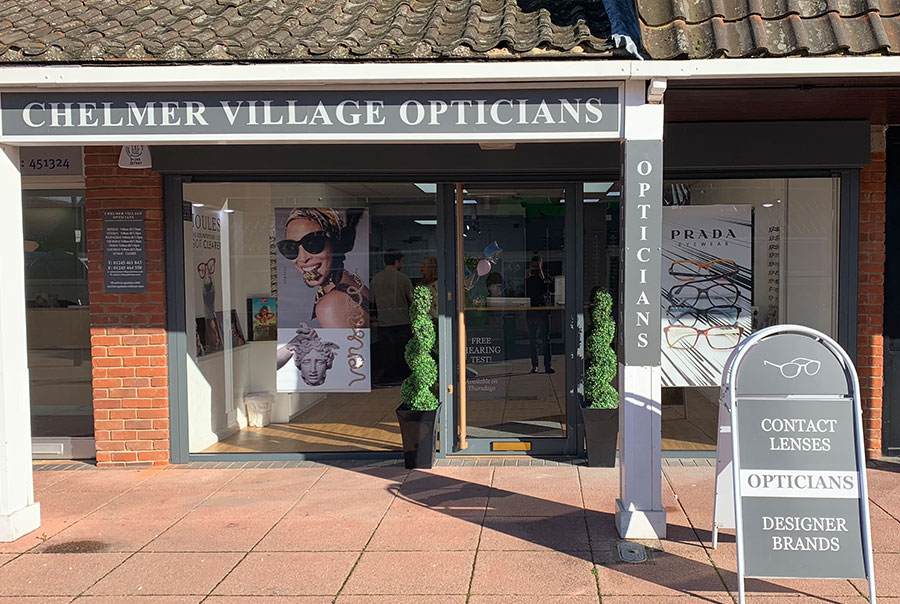Cataract Screening
What is a cataract?
Cataract is a clouding of the crystalline focusing lens of the eye that sits behind the iris. This lens is responsible for fine-focusing light on to the light sensitive retina at the back of the eye. As you get older the proteins in the lens denature and the lens becomes less transparent, making your vision cloudy. This is usually a very gradual process so normally the first person to see the cataract is your optometrist – years before you notice any problems and years before they require any surgery. As you get older the cataract will develop further and you will start to notice changes in your vision.
What causes cataracts?
Cataracts are most common in the older population, most appearing over the age of 50. Age is the biggest factor in the development of cataracts, but they can develop at any age. Some children are born with them (congenital cataracts). Cataracts are associated with exposure to UV light and therefore are much more common in a younger patient base in countries closer to the equator. Other factors can include trauma to the eye, diabetes, certain drugs (particularly steroids) and some ocular diseases.
Symptoms
- Glare
‘Veil’ over your vision
- Gradually blurred vision
- Frequent changes in prescription
- Double vision in one eye
- Change in colour perception – particularly noticeable if you have a cataract in one eye and not the other
Types of Cataract
Nuclear cataract
Nuclear cataract forms in the centre of the lens and often takes on a yellowy-brown colouration. These cataracts are associated with short-sightedness – the cataract alters the shape of the lens making it thicker and therefore bending the light entering the eye more. This makes you go more short-sighted, so if you are short-sighted to begin with you may find your prescription begins to get worse. If you are long-sighted to begin with you may find your prescription suddenly seems to start getting better.
Cortical
Cortical cataracts have a spoke-like appearance, starting in the periphery of the lens and growing inwards. They are often seen in the part of the lens closest to the nose, where UV is focused most throughout your lifetime. People with cortical opacities tend to complain of glare due to the light scattering.
Posterior Subcapsular Cataract
This cataract forms over the back of the lens and has a plaque-like appearance. Due to its position in the lens it tends to have a bigger impact on vision than other types of cataract. People with posterior subcapsular cataracts tend to have more problems with reading than distance vision, and when their pupils are small e.g. headlights of oncoming cars and in bright sunlight.
Treatment
Early cataracts do not tend to cause any problems with vision and therefore are generally left alone until they progress. When your vision decreases you can be referred for cataract surgery. To be eligible for cataract surgery on the NHS your vision must have decreased to a certain level before they will consider you for the operation. We will keep an eye on your cataracts and will advise you when you meet this standard. If you wish to have the cataracts removed earlier then you can have them removed privately, although we advise you wait until your vision is significantly affected before you consider surgery as an option. Although cataract surgery is one of the most successful surgeries there is, all surgery carries a risk and should only be done if you will benefit from it.
Cataracts do not do any harm to the eye if they are not operated on, but they will progressively blur your vision. Some patients opt not to have the surgery when we advise them the cataract is ‘ready’ as they are happy with their vision and do not feel the need – this is perfectly fine and entirely up to you. We would advise you if there is any reason we need the cataract operation done earlier than you would like, for example: to meet the driving standard if you are a driver, or if we are finding it dificult to see behind the cataract and check the health of the back of the eye.
The Surgery
Cataract surgery nowadays is a relatively simple operation compared to a few decades ago. A small incision is made at the edge of the coloured part of your eye (iris) and a probe is inserted to break down the cataract using sound waves. A second probe is then inserted to remove the debris from the eye. A clear plastic lens is then inserted to replace the cataract: this lens is calculated to correct the majority of your distance prescription so hopefully no distance glasses are required after the surgery. However, this requires a lot of precision so we can’t guarantee this!
The surgery takes approximately 15 minutes and you do not have to have general anaesthesia. Although you are awake for the procedure, you will not be able to see what is going on and there will be someone there to hold your hand should you need the surgeon to stop at any point.
After the surgery you will be given some eye drops to administer for approximately four weeks after the cataract surgery. Once these drops are finished you will return to the hospital for a follow-up check. The hospital may ask you to get your prescription checked by us before or after they see you for the follow-up appointment. The prescription can be checked as long as the course of eye drops has been completed. You can expect your prescription to have changed quite a bit from before the surgery.
Please call us on 01245 461 843 or send an email to info@chelmervillageopticians.co.uk if you would like further advice.










